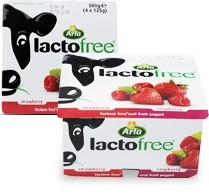Consumers value see-through packaging with simple messages, LFR

Head of Sensory and Consumer at Leatherhead Food Research (LFR) Cindy Beeren, told FoodManufacture.co.uk that a recent study with 190 participants (in the first quarter of 2011) showed that consumers of all ages indicated the “major importance” of see-through packaging.
“In addition, consumers aged 18-30 particularly liked simple messages with strong images (think LactoFree milk with the big cow face),” she said.
Beeren said all age groups identified cardboard and paper as the most environmentally friendly packaging materials, followed by glass. A 51+ group particularly valued convenience and the ability to refill packaging.
Noting that 65-70% of all UK consumer packaging produced is used for food and drink, Keith Barnes, chairman of the Packaging Council, told FoodManufacture.co.uk:
“I would say the public are becoming more aware of green issues, the environment and saving money on the packaging side. Against 2008 say [just before the recession hit] the public don’t have as much money and think ‘I’m not spending it all on packaging’.”
Polarising opinions
With ease of use and visual appeal crucial factors in encouraging consumers to buy, then repurchase particular products, Beeren saidit was important for any manufacturer to research the suitability and acceptability of the packaging.
For instance, she said that testing of different cheese packaging materials at Leatherhead showed a consumer preference towards re-sealable packs, with ease of use becoming more important for consumers.
However, LFR's focus groups had shown “polarising opinions towards certain packaging materials and labels, pictures and phrases on these”.
“Ease of opening is also very important to consumers,” she said. “Ring-pulls are seen by some consumers as difficult, and they feel scissors should not be necessary when opening most food packaging materials."
Convenience also applies to recycling, Beeren added, withconsumers generally keen to do ‘the right thing’ provided the local council had “appropriate, convenient facilities” for recyling in place, which “may affect re-purchasing decisions”.
Of course, many packaging decisions relate to cost. Barnes said he found the plastic seals on milk carton lids annoying, but said: “Such issues are in many ways the fault of supermarkets, which are always looking for the cheapest possible choice, not necessarily the right one.”
Road testing
Many faults can be removed by adequate concept packaging testing with a consumer panel to gain feedback. This is vital given the damage to brand and sales, not to mention product safety isses, that can result if food firms get things wrong.
Barnes said: “Major brandowners are road-testing food packaging to an enormous extent, and food is just behind pharmaceuticals in this respect.
“Food isn’t a matter of life and death, although it can be in extreme cases,” he added, citing recent packaging safety scares such as mineral oil leeching in cardboard.
Insisting that the press blow such issues out of proportion to their importance, Barnes said that nonetheless: "It is sometimes better to change [packaging]. If you have a stronger and more virgin board, for instance, then your production line might also run faster.”
Consumer priorities
Obviously, 18-year-olds have some shared and some different priorities to pensioners where packaging goes, so did Beeren believe food firms paid enough attention to such issues with different pack products and styles?
“Consumers of different demographics and indeed from different geographical areas will have different expectations,” she said.
Nonetheless, Beeren added, some packaging “just seems to tick all the boxes”, with one example being Jordan’s cereals. “Basic cardboard packaging and simple graphics very much appeal to the younger consumers, whilst all age groups like the see-through element.
“Consumers aged 51+ are stating the see-through factor as convenient: you can see how much is still left and the product is re-sealable too.”
With new market trends appearing all the time,Beeren said consumers were particularly aware of samples in re-usable pots: Bighams ready meals, Danone and Gü desserts, as well as resealable packs: milk, Kenco coffee and wine.
In-store packaging trend?
Barnes said he believed more products would be packaged in cheaper packs in future, where this would entail dialogue between manufacturers, brandowners and producers, with retailers perhaps yielding to government pressure to steer a more sustainable packaging course.
One novel initiative could involve more packaging of bulk items instore, he said, with products such as fruit juice supplied from a large machine providing some kind of receptacle.
But did Barnes seriously see such a move catching on, given the importance placed by major brandowners on the aesthetics of food packaging?
“It depends upon the brand. We could produce machines for all manner of commodities, and there are lots of areas where people are looking at such things," he said.
"I am sure this is the way the future will go. Although there will always be niche markets for certain products, say soya milk, that people are prepared to pay a premium for [which will be packaged and supplied traditionally].”












